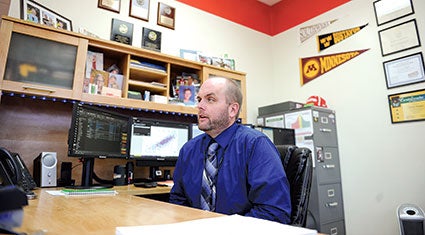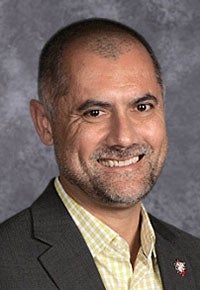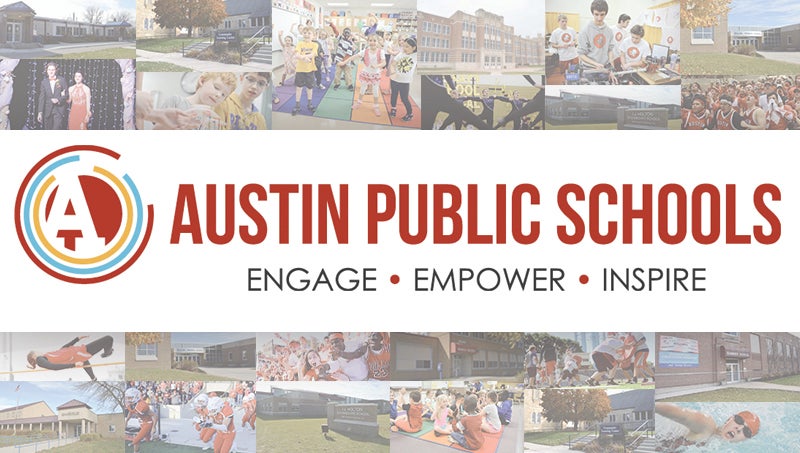Painting a picture of Minnesota schools; North Star Accountability reflects student progress, APS officials say students are more than test scores
Published 8:49 am Friday, August 30, 2019
The Minnesota Department of Education on Thursday released the 2019 North Star Accountability Report, which showed that APS was faring well with its progress of working to meet students where they are.
North Star Accountability replaced an older system that originally emphasized on single ratings that combined different factors, while the new system looks at five areas pertaining to academic achievement, academic progress, English language learners’ progress, graduation rates and student attendance. This system was created to help schools that are lagging behind in several areas and provide additional resources from the state to help them achieve and meet goals.
Last year, Austin Public Schools was identified as a district that needed support from the MDE.
From the report, APS scored 37.24 in its math achievement assessments with 2,596 students having taken the test, which placed the district on the lower half of districts, as well as in reading assessments, where APS scored 44.29 with 2,610 students taking the assessment.

Corey Haugen, APS director of research evaluation and assessment. Herald file photo
Corey Haugen, director of research and evaluation, stated that even though APS may have been in the lower tier among the Big 9 Schools, the numbers needed some context as multiple different factors influence the data as well as making sure comparisons were made with districts similar to APS.
“If you look at the Big 9 Schools, their districts are not reflective of the demographics we have here in Austin,” Haugen said. “We lead in the percentages of non-white students as well as students on the free or reduced lunch program. How did we do? Do we want to improve? Yes, but comparatively to other districts who are our neighbors, it’s not the same. The truth is that Austin in comparison to the rest of the state, has a metro-urban demographic this conference we’re a part of in that regard.”
Among the Big 9 Schools, APS has a significant number of English learners (EL) who would be taking assessments at the grade level they’re supposed to be in based on their age. Austin has 792 EL students who took the assessment, which was comparable to Worthington Public Schools that had 842 EL students, as well as Willmar Public Schools that had 864 EL students.
For those whose native language isn’t English, trying to test at the same level as someone who was a native English speaker would be a severe disadvantage, said John Alberts, executive director of educational services. With APS also having a large refugee population, many students may have never stepped foot into a formal classroom setting prior to attending school in Austin.
With a significant portion of the district’s students coming from different areas of life experiences, the lower scores don’t show the individual progress each student makes, whether they hit the standards set by the state or not.

John Alberts
“It is something to consider,” Alberts said. “Our students, teachers and staff work very hard in the classrooms, and we need to keep these things in context. These assessments are only a singular snapshot. We encourage multiple snapshots since this is only one piece of the puzzle. Not all students start from the same starting line.”
To paint a broader picture, although Rochester Public Schools has 1,467 EL students who took assessments, their school district has larger enrollment numbers. When thinking about how many students attend RPS in contrast to APS, which has less students enrolled, but a higher concentration of diversity, it’s important to compare APS with districts similar in demographics such as Willmar and Worthington. APS surpassed them both.
One of the highlights from the 2019 report was that the graduation rate from Austin High School increased by five percent from last year, Haugen said. This means that the current rate for APS is 76.07 percent graduation rate, which is comparable to the graduation rates in Willmar Public School District and the Worthington Public School District.
As for the growing diversity in APS, Haugen said that this trend will continue to grow. Last year, APS’ non-white student population exceeded the white student population for the first time in school history, with minority students making up 51.8 percent of students and white students making up 48.2 percent. This year’s Woodson Kindergarten Center class has a demographic of 52 percent non-white students.
Overview statewide
School districts statewide have generally trended toward positive developments, according to the MDE. This year’s North Star data showed that no new schools were identified for support beyond schools that were already receiving support from the MDE, which was “promising” to officials.
“The state of our students is promising, and it’s up to us to meet their promise with our support,” said Mary Cathryn Ricker, education commissioner. “Too often, we condense our students down to one single data point, which eliminates everything about our students that make them who they are.”
Ricker stated that by looking at the broader picture based on side-by-side data, then it’s easier to see the various successes that students have been experiencing, as well as seeing what’s best to help support them to reach their fullest potential in the classroom.
“My promise to our students is to continue seeing their strengths, persist alongside them and tackle barriers that stand in their way,” she added.
This year, the MDE found that:
• The number of American Indian students taking the ACT has more than doubled since 2014.
• ACT participation increased by 70 percent for black students between 2014 and 2018.
• 70 percent of black high school graduates enrolled in higher education within 16 months of graduation.
• 76.3 percent of Hispanic students graduated high school in seven years.
• Minnesota’s English learners speak 226 different languages all together.
• The four-year graduation rate for students focusing in career and technical education (CTE), students completing 240 CTE course hours within one field is at 92 percent.
• 83.2 percent of all Minnesota students graduated high school in four years, the highest rate on record.
• 62.8 percent of students with disabilities were educated in a general education classroom for at least 80 percent of their day.
The commissioner believes by utilizing the findings of the North Star report, a more complete picture can be painted of students instead of just a test score.
“When we open the doors, our students bust through them,” Ricker said. “Our students’ potential, and their determination to succeed, is more than ambitious. It is promising for our future and meeting their ambition with our support that will turn Minnesota into the Education State.”
However, there are still some obstacles that educators and officials are looking to address moving forward. The report showed that gaps between students groups remained persistently similar from 2018 to 2019. For American Indian students, 57.6 percent consistently attended at least 90 percent of school days in comparison to 78.8 percent of Hispanic students and 91.3 percent of Asian students.
Math achievement rates declined slightly for all students in 2019, with rates for each individual student group following that trend. Reading achievement rates stayed steady from 2018 to 2019, and gaps between student groups stayed the same.
“Gaps need to be closed,” Ricker said. “Minnesota students face gaps in learning, housing, household income, health and more. That’s why I’m committed to finding ways to serve the whole child, so all children have the support they need to succeed in the classroom. If we keep doing the same things, we will keep getting the same results. I am committed to reimagining what education can be in the state of Minnesota, and that includes resisting the urge to rely on test scores as our sole indicator of progress.”
With the data only showing numbers, Alberts said it was important to remember that students were more than just test scores and data, and that the successes of students making progress individually was where the district’s focus lies.
“We have awesome kids, teachers and families,” he said. “We’re seeing improvements and those are the real stories behind achievement, and it’s not going to be primarily raising standardized test scores.”




